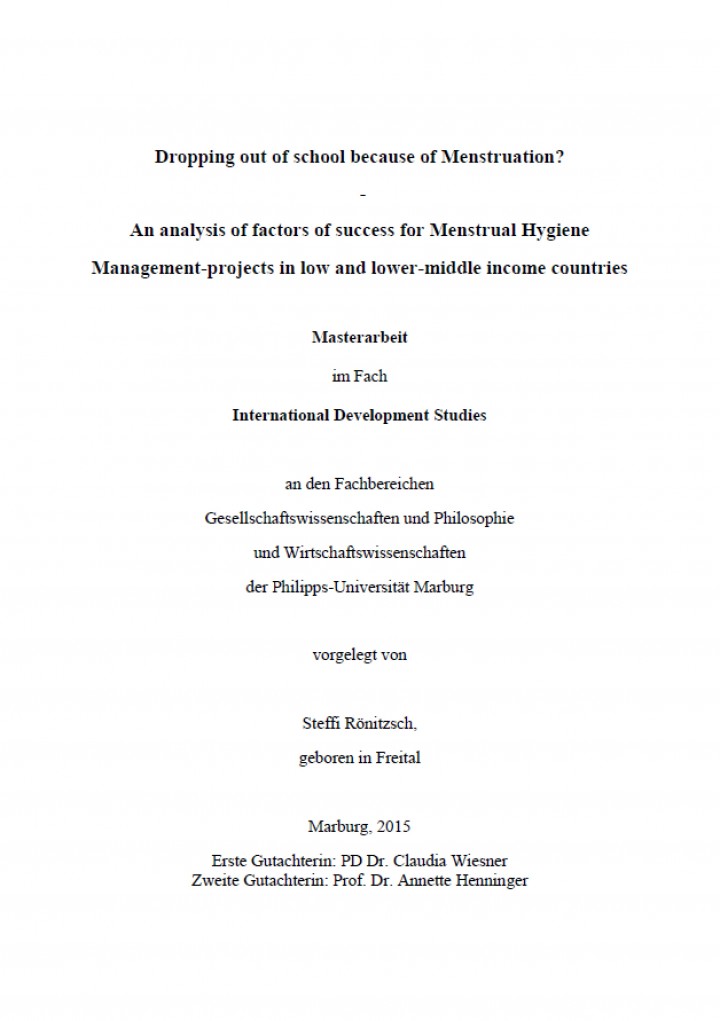Dropping out of school because of Menstruation? An analysis of factors of success for Menstrual Hygiene Management-projects in low and lower-middle income countries Roenitzsch, S. (2015)
Bibliographic information
Roenitzsch, S. (2015). Dropping out of school because of Menstruation? An analysis of factors of success for Menstrual Hygiene Management-projects in low and lower-middle income countries Masterarbeit, Philipps-Universität Marburg
Filter / Tags
Case studies in other formatsEnglishGender equalityMenstrual Health and Hygiene (MHH)

